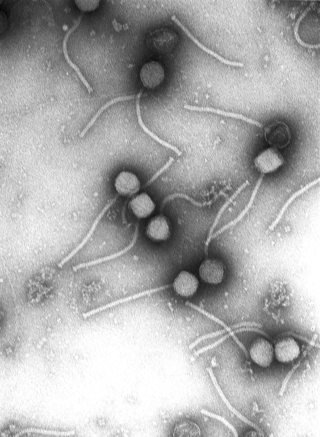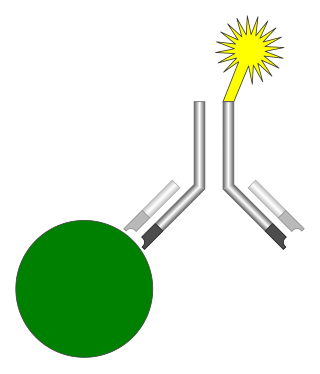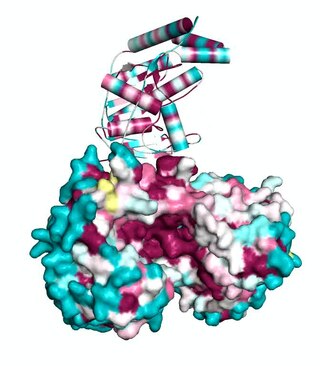This article has multiple issues. Please help improve it or discuss these issues on the talk page . (Learn how and when to remove these template messages)
|
Chester Louis Sutula is an American scientist from Erie, Pennsylvania, US. [1]
This article has multiple issues. Please help improve it or discuss these issues on the talk page . (Learn how and when to remove these template messages)
|
Chester Louis Sutula is an American scientist from Erie, Pennsylvania, US. [1]
Chester (Chet) Sutula obtained his Bachelor of Science degree in chemistry from Holy Cross College, Worcester, Massachusetts in 1954 and his Ph.D. degree in physical chemistry from Iowa State University, Ames, Iowa in 1959. He worked for eight years for Marathon Oil Company, Littleton, Colorado, performing research on the influence of capillarity and surface chemical forces in secondary oil production, and, the structural properties of microemulsions using small angle x-ray scattering. In 1967, he joined Ames Company, a division of Miles Laboratories, Inc. in Elkhart, Indiana, and became its Research Director in 1970. His team at Ames performed fundamental and applied research on the properties of solid, porous analytical devices, such as, Lateral flow device (strip test) for urinalysis, blood chemistry, microbiology and quantitative, simple measurement of blood glucose for daily use by diabetics. In 1976, he joined Ortho Diagnostics Systems, a division of Johnson & Johnson, Inc., as vice president of R&D and worked on new systems for blood typing, high volume immunoassays, and tests to detect hepatitis, pregnancy and blood coagulation disorders. In 1981, with his wife, Jane, and a technology partner in Europe, Dr. Sutula founded Agdia, Inc., Elkhart, Indiana, to develop and provide reliable and practical diagnostics for the detection of plant pathogens.
Dr. Sutula has served on American Phytopathological Society (APS) committees for Industry, for Virology, and for Diagnostics and has been a reviewer for Plant Disease. He has authored several articles and many posters and presentations dealing with the detection of plant pathogens.
1/ In the 80's, diagnostic assays based on the Enzyme Linked Immunosorbent Assay (ELISA) method were already being developed for human and veterinary applications. Following the reports of the first use of ELISA to detect plant viruses by Voller and Clarke (1976), Dr. Sutula introduced in 1981 the first commercial kits for the detection of common viruses and bacteria in potato. These kits provided all of the components that were necessary to perform the test in a ready-to-use format, called PathoScreen®. He established collaborations with many plant pathologists all over the world to produce tests that are recognized worldwide for their quality and value.
2/ With two competing companies in Europe, Inotech, Basil, Switzerland and Boehringer Mannheim, Germany, Dr. Sutula pioneered the concept of "reagent sets"—matched, quality-controlled antibodies and antibody-enzyme conjugates that can be used to prepare and perform one's own test. He integrated these ideas into plant diagnostics, expanded the scope of diagnostic assays, and guided Agdia to a continuous company growth over the past 35 years.
3/ In response to many requests, he formed Agdia Testing Services in 1982, a unit of Agdia. Agdia currently offers more than 200 tests that use several technologies, such as ELISA, Recombinase Polymerase Amplification (RPA), Polymerase Chain Reaction (PCR), nucleic acid hybridization, immunochromatography, and Immunofluorescence assay (IFA), to detect viruses, viroids, bacteria, fungi, mycoplasma, insects, plant hormones, and proteins in conventional and genetically modified crops (GMO). He developed international sales and helped to establish Agdia-Biofords, French company based in Genopole Évry, in charge of product distribution in Europe, Africa and Middle East.
Dr. Sutula's vision was to make research on detecting plant pathogens available to many persons in worldwide agriculture and to package this technology into easy-to-perform, affordable tests. Now in retirement, Chet continues his special interest in simplifying complex chemistry and procedures into tests that are reliable and simple to perform.
Sutula, Chester Louis, Structure, molecular orientation and mechanically induced reorientation of molecules in multimolecular films of long-chain n-hydrocarbon derivatives, 155 (1959)
1. van Kretschmar, J. B., Bailey W. D., Arellano, C., Thompson, G. D., Sutula, C. L., Roe, R. M., Feeding disruption tests for monitoring the frequency of larval lepidopteran resistance to Cry1Ac, Cry1F, and Cry1Ab, Crop Prot. 30(7), 863-870 (2011)
2. Roe, R. M., W. D. Bailey, W. D., Gould, F., Sorenson, C. E., Kennedy, G. G., Bacheler, J. S., Rose, R. Hodgson, L. E., Sutula, C. L., Detection of resistant insects and IPM, Emerging technologies for integrated pest management concepts, research and implementation. Proceedings of a Conference, Raleigh, North Carolina, US, 8–10 March 1999. 2000 pp. 67–84. [Book ISBN 0-89054-246-5]
3. Zeng, F., Ramaswamy, S. B., Luttrell, R. G., Reed, J., Parker, C. D., Stewart, S., Harris, A., Knighten, K., Robbins, J., Xia, J. Q., Sutula, C. L., Comparison of monoclonal antibody and laboratory rearing techniques to identify Heliothentinaen (Lepidoptera: Noctuidae) eggs from Mississippi cotton fields, Environmental Entomology 28 (2): 275-281 (1999)
4. Yuen, G. Y., Xia, J. Q., Sutula, C. L., A Sensitive ELISA for Pythium ultimum Using Polyclonal and Species-Specific Monoclonal Antibodies, Plant Dis. 82(9), 1029-1032 (1998)
5. Xia, J. Q., Sutula, C. L., Marti, D., Development of a greenhouse test for tomato spotted wilt virus and impatiens necrotic spot virus, Acta Horticulturae 431:193-198 (1995)
6. Sutula, C. L., Gillett, J. M., Morrissey, S. M., Ramsdell, D. C., Interpreting ELISA data and establishing the positive-negative threshold, Plant Dis. 70(8s), 722 (1986)
7. Wershaw, R. L., Burcar, J. P., Sutula, C. L., Wiginton, B. L., Sodium humate solution studied with small-angle x-ray scattering, Science 157(3795), 1429-31 (1967)
8. Sutula, C. L., Wilson, J. E., Solid-like films at a moving interface, Society of Petroleum Engineers Journal 7(1), (1967)
9. Bartell, L. S., Sutula, C. L., Mechanically induced molecular reorientation in multimolecular films, The Journal of Physical Chemistry 67(11), 2413-2416 (1963)
10. Sutula, C. L., Bartell, L. S., Structure and molecular orientation in multimolecular films of long-chain n-hydrocarbon derivatives, The Journal of Physical Chemistry 66(6), 1010-1014 (1962)
1. Bandla, M, D., Chambers, M, R., Sutula, C. L., Immunoassay and method of use, U.S. Patent Number: 7,585,641
2. Roe, R. M., Bailey, W. D., Gould, F., Kennedy, G. G., Sutula, C. L., Insecticide Resistance Assay. U.S. Patent Number: 6,517,856. (2003)
3. Geister, R. L., Bandla, M. D., Sutula, C. L., Multiplex enzyme-linked immunosorbent assay for detecting multiple analytes, U.S. Patent Appl. Number: 20040231776
4. Stiso, S. N., Sutula, C. L., Method, composition and device for determining the specific gravity or osmolality of a liquid, U.S. Patent Number: 4,108,727
5. Sena, E. A., Tolbert, B. M., Sutula, C. L., Liquid scintillation, counting and compositions, U.S. Patent Number: 3,928,227
6. Sutula, C. L., Wilson, J. E., Cleaning porous solids, U.S. Patent Number: 3,325,309

Virology is the scientific study of biological viruses. It is a subfield of microbiology that focuses on their detection, structure, classification and evolution, their methods of infection and exploitation of host cells for reproduction, their interaction with host organism physiology and immunity, the diseases they cause, the techniques to isolate and culture them, and their use in research and therapy.

The enzyme-linked immunosorbent assay (ELISA) is a commonly used analytical biochemistry assay, first described by Eva Engvall and Peter Perlmann in 1971. The assay uses a solid-phase type of enzyme immunoassay (EIA) to detect the presence of a ligand in a liquid sample using antibodies directed against the protein to be measured. ELISA has been used as a diagnostic tool in medicine, plant pathology, and biotechnology, as well as a quality control check in various industries.

HIV tests are used to detect the presence of the human immunodeficiency virus (HIV), the virus that causes acquired immunodeficiency syndrome (AIDS), in serum, saliva, or urine. Such tests may detect antibodies, antigens, or RNA.
A biosensor is an analytical device, used for the detection of a chemical substance, that combines a biological component with a physicochemical detector. The sensitive biological element, e.g. tissue, microorganisms, organelles, cell receptors, enzymes, antibodies, nucleic acids, etc., is a biologically derived material or biomimetic component that interacts with, binds with, or recognizes the analyte under study. The biologically sensitive elements can also be created by biological engineering. The transducer or the detector element, which transforms one signal into another one, works in a physicochemical way: optical, piezoelectric, electrochemical, electrochemiluminescence etc., resulting from the interaction of the analyte with the biological element, to easily measure and quantify. The biosensor reader device connects with the associated electronics or signal processors that are primarily responsible for the display of the results in a user-friendly way. This sometimes accounts for the most expensive part of the sensor device, however it is possible to generate a user friendly display that includes transducer and sensitive element. The readers are usually custom-designed and manufactured to suit the different working principles of biosensors.
Serology is the scientific study of serum and other body fluids. In practice, the term usually refers to the diagnostic identification of antibodies in the serum. Such antibodies are typically formed in response to an infection, against other foreign proteins, or to one's own proteins. In either case, the procedure is simple.

An immunoassay (IA) is a biochemical test that measures the presence or concentration of a macromolecule or a small molecule in a solution through the use of an antibody (usually) or an antigen (sometimes). The molecule detected by the immunoassay is often referred to as an "analyte" and is in many cases a protein, although it may be other kinds of molecules, of different sizes and types, as long as the proper antibodies that have the required properties for the assay are developed. Analytes in biological liquids such as serum or urine are frequently measured using immunoassays for medical and research purposes.

Influenza C virus is the only species in the genus Gammainfluenzavirus, in the virus family Orthomyxoviridae, which like other influenza viruses, causes influenza.
Extractable nuclear antigens (ENAs) are over 100 different soluble cytoplasmic and nuclear antigens. They are known as "extractable" because they can be removed from cell nuclei using saline and represent six main proteins: Ro, La, Sm, RNP, Scl-70, Jo1. Most ENAs are part of spliceosomes or nucleosomes complexes and are a type of small nuclear ribonucleoprotein (snRNPS). The location in the nucleus and association with spliceosomes or nucleosomes results in these ENAs being associated with additional RNA and proteins such as polymerases. This quality of ENAs often makes it difficult to purify and quantify their presence for clinical use.

An antibody microarray is a specific form of protein microarray. In this technology, a collection of captured antibodies are spotted and fixed on a solid surface such as glass, plastic, membrane, or silicon chip, and the interaction between the antibody and its target antigen is detected. Antibody microarrays are often used for detecting protein expression from various biofluids including serum, plasma and cell or tissue lysates. Antibody arrays may be used for both basic research and medical and diagnostic applications.
Bovine leukemia virus (BLV) is a retrovirus which causes enzootic bovine leukosis in cattle. It is closely related to the human T‑lymphotropic virus type 1 (HTLV-I). BLV may integrate into the genomic DNA of B‑lymphocytes as a DNA intermediate, or exist as unintegrated circular or linear forms. Besides structural and enzymatic genes required for virion production, BLV expresses the Tax protein and microRNAs involved in cell proliferation and oncogenesis. In cattle, most infected animals are asymptomatic; leukemia is rare, but lymphoproliferation is more frequent (30%).
Anti-gliadin antibodies are produced in response to gliadin, a prolamin found in wheat. In bread wheat it is encoded by three different alleles, AA, BB, and DD. These alleles can produce slightly different gliadins, which can cause the body to produce different antibodies. Some of these antibodies can detect proteins in specific grass taxa such as Triticeae, while others react sporadically with certain species in those taxa, or over many taxonomically defined grass tribes.
Potato virus Y (PVY) is a plant pathogenic virus of the family Potyviridae, and one of the most important plant viruses affecting potato production.

A lateral flow test (LFT), is an assay also known as a lateral flow device (LFD), lateral flow immunochromatographic assay, or rapid test. It is a simple device intended to detect the presence of a target substance in a liquid sample without the need for specialized and costly equipment. LFTs are widely used in medical diagnostics in the home, at the point of care, and in the laboratory. For instance, the home pregnancy test is an LFT that detects a specific hormone. These tests are simple and economical and generally show results in around five to thirty minutes. Many lab-based applications increase the sensitivity of simple LFTs by employing additional dedicated equipment. Because the target substance is often a biological antigen, many lateral flow tests are rapid antigen tests (RAT or ART).
In the diagnostic laboratory, virus infections can be confirmed by a myriad of methods. Diagnostic virology has changed rapidly due to the advent of molecular techniques and increased clinical sensitivity of serological assays.

Anti-double stranded DNA (Anti-dsDNA) antibodies are a group of anti-nuclear antibodies (ANA) the target antigen of which is double stranded DNA. Blood tests such as enzyme-linked immunosorbent assay (ELISA) and immunofluorescence are routinely performed to detect anti-dsDNA antibodies in diagnostic laboratories. They are highly diagnostic of systemic lupus erythematosus (SLE) and are implicated in the pathogenesis of lupus nephritis.
Magnetic immunoassay (MIA) is a type of diagnostic immunoassay using magnetic beads as labels in lieu of conventional enzymes (ELISA), radioisotopes (RIA) or fluorescent moieties to detect a specified analyte. MIA involves the specific binding of an antibody to its antigen, where a magnetic label is conjugated to one element of the pair. The presence of magnetic beads is then detected by a magnetic reader (magnetometer) which measures the magnetic field change induced by the beads. The signal measured by the magnetometer is proportional to the analyte concentration in the initial sample.
The antibodies from lymphocyte secretions (ALS) assay is an immunological assay to detect active diseases like tuberculosis, cholera, typhoid etc. Recently, ALS assay nods the scientific community as it is rapidly used for diagnosis of Tuberculosis. The principle is based on the secretion of antibody from in vivo activated plasma B cells found in blood circulation for a short period of time in response to TB-antigens during active TB infection rather than latent TB infection.

NS1 antigen test is a test for dengue, introduced in 2006. It allows rapid detection on the first day of fever, before antibodies appear some 5 or more days later. It has been adopted for use in some 40 nations. The method of detection is through enzyme-linked immunosorbent assay. India has introduced in 2010 the NS1 test costing 1,600 rupees at a private hospital in Mumbai.

Molecular diagnostics is a collection of techniques used to analyze biological markers in the genome and proteome, and how their cells express their genes as proteins, applying molecular biology to medical testing. In medicine the technique is used to diagnose and monitor disease, detect risk, and decide which therapies will work best for individual patients, and in agricultural biosecurity similarly to monitor crop- and livestock disease, estimate risk, and decide what quarantine measures must be taken.
Protein detection is used for clinical diagnosis, treatment and biological research. Protein detection evaluates the concentration and amount of different proteins in a particular specimen. There are different methods and techniques to detect protein in different organisms. Protein detection has demonstrated important implications for clinical diagnosis, treatment and biological research. Protein detection technique has been utilized to discover protein in different category food, such as soybean (bean), walnut (nut), and beef (meat). Protein detection method for different type food vary on the basis of property of food for bean, nut and meat. Protein detection has different application in different field.